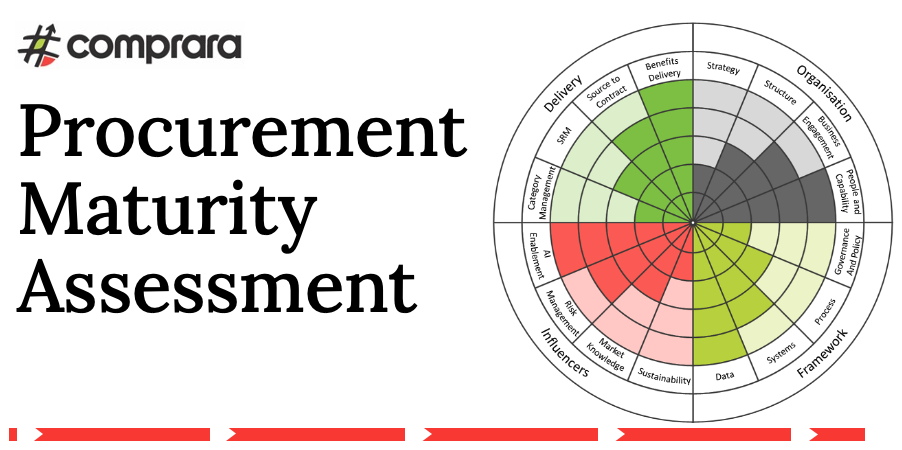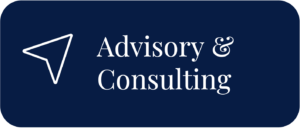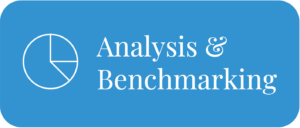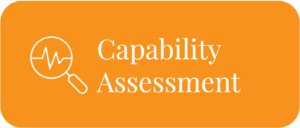In the first part of this series, we explored the evolution of procurement maturity, detailing the ‘Three Waves of Procurement’ – Buy to Produce, Buy to Sell, and Buy to Innovate. We discussed how procurement has transitioned from a back-office function to a strategic driver of innovation and business success. If you missed it, I highly recommend going back to read Part 1 to understand the foundational concepts and stages of procurement maturity.
Now, in Part 2, we’ll dive into practical steps and strategies for advancing your organisation’s procurement maturity. We’ll look at how to assess your current maturity level, develop new skillsets, leverage digital tools, build strategic supplier relationships, and measure success. By implementing these strategies, you can transform your procurement function from a cost center to a value driver, positioning your organisation at the forefront of procurement excellence.
Let’s talk about procurement maturity levels. Understanding these is important if you want to move your organisation from basic buying to becoming a strategic player.
Procurement Maturity Levels
Understanding procurement maturity levels is crucial for moving your organisation from basic buying to becoming a real strategic player. In this part, we’ll look at both lower and higher maturity levels, breaking down what each level looks like, the challenges you might face, and the benefits you can expect.
A. Lower Maturity Levels (1 and 2)
Lower maturity levels in procurement are characterised by basic transactional processes and a limited strategic focus. At these levels, procurement activities are primarily centered on routine transactions, often lacking alignment with broader business goals.
The main challenges include inefficiency and a negative net value, as the cost savings achieved are often insufficient to justify the resources expended. Organisations operating at these maturity levels struggle to leverage procurement as a strategic function, limiting their ability to drive significant value. Progressing beyond these levels is crucial for organisational success, as it enables more strategic and value-driven procurement practices.
Clues that you are operating at lower procurement maturity levels
First, if you’re all about the transactions and quick wins, that’s a big clue. You might be so focused on getting the best price for today that you’re missing out on bigger, long-term opportunities.
Another sign? If procurement feels disconnected from the rest of the business. When procurement isn’t in sync with the company’s overall goals, you’re probably leaving a lot of value on the table.
Then there’s the efficiency factor. If you’re still doing things manually, with a lot of paperwork and back-and-forth, that’s a red flag. It’s not just slow – it’s costing you money.
Speaking of money, here’s a big one: if your procurement efforts are costing more than they’re saving, that’s a clear sign you’re at a lower maturity level. It’s like spending a dollar to save a dime – it just doesn’t add up.
Now, moving past these early stages isn’t easy. It requires some serious changes. You’ll need to think more strategically about procurement, moving through stages of Control, Optimise, and eventually Transform. This means investing in some good technology, and probably upskill your team.
But don’t get discouraged if you recognise your organisation here. Identifying where you are is the first step to improving. And trust me, the payoff for moving to higher maturity levels can be huge for your organisation.
B. Higher Maturity Levels (3 and 4)
Higher maturity levels represent strategic procurement integrated with the organisation’s overall business goals. At these levels, procurement functions are not just operational but are critical components of strategic planning and execution. Characteristics include advanced supplier relationship management, data-driven decision-making, and a focus on innovation and value creation.
The benefits of operating at higher maturity levels are substantial, including increased efficiency, enhanced innovation capabilities, and significant value creation.
Leading organisations at these levels showcase successful case studies, where strategic procurement initiatives have led to notable improvements in supply chain performance, cost management, and competitive advantage.
Clues that you are operating at higher procurement maturity levels
First off, procurement isn’t off in its own world anymore. It’s right there in the thick of things, aligned with your company’s big-picture goals. You’re driving the business forward.
You’re also nailing supplier relationships. We’re talking long-term partnerships here, where both sides are winning and innovating together. It’s not just about getting the best price anymore.
Innovation? That’s where you’re really shining. You’re working hand-in-hand with suppliers to create new products and solutions. Procurement isn’t just supporting innovation; it’s driving it. Data is your best friend at this level. You’re using advanced analytics to make smarter decisions, not just going with your gut.
You’re also always looking to improve. You’re leveraging the latest tech and best practices to stay ahead of the game. Speaking of tech, AI is a big player at this level. It helps you predict demand, find savings, and pick the best suppliers. This frees up your team to focus on the strategic stuff.
Risk management is proactive, not reactive. You’re prepared for those curveballs the global market can throw at you.
Talent is a top priority. You’re not just hiring the best; you’re keeping them engaged and developing their skills. You’re a master at managing stakeholders, keeping everyone from finance to R&D in the loop and on board with your strategies. Navigating complex regulations? You’ve got that down pat, especially if you’re operating globally.
And sustainability isn’t just a bussword for you. It’s baked into your strategies, from choosing suppliers to setting targets.
If you’re ticking these boxes, congratulations! You’re operating at a high level of procurement maturity. But remember, there’s always room to grow and improve. The procurement landscape is always evolving and staying at the top of your game means constantly adapting and innovating.
Implementing Procurement Maturity in Your Organisation
Alright, so you want to take your procurement function to the next level. That’s fantastic, but it’s not something that happens overnight.
Achieving procurement maturity is a multi-faceted process that requires a thorough understanding of your current capabilities and a strategic approach to advancing them. It’s a journey, and like any good journey, you need to know where you’re starting from and have a solid plan for where you’re going. First things first, you need to take a good, hard look at where you are right now. What are your strengths? Where are you falling short? Think of it as taking a snapshot of your procurement function as it stands today.
Assessing Current Maturity Level
Alright, let’s talk about the first big step on your journey to procurement maturity – figuring out where you stand right now. It’s like taking a snapshot of your procurement function, warts and all.
Now, I want to tell you about a fantastic tool we’ve developed at Comprara – our Procurement Maturity Assessment. This is a comprehensive deep dive into your procurement practices. We’ve designed it to give you a crystal-clear picture of where you’re excelling and where there’s room for improvement.

Here’s how we approach this:
We delve into 4 procurement and commercial dimensions which are underpinned by 16 factors that we measure.
- Organisation:
How aligned are your procurement goals with your overall organisational goals?
Dimensions: Strategy, Structure, Business Engagement, People and Capability. - Framework:
Are your procurement activities guided by a robust framework of policies and processes? Dimensions: Governance and Policy, Process, Systems, Data. - Influencers:
How well do you understand the market conditions and manage risks in your supply chain? Dimensions: Sustainability, Market Knowledge, Risk Management, AI Enablement - Delivery:
How effectively do you manage your procurement categories and supplier relationships? Dimensions: Category Management, SRM, Source to Contract, Benefits Delivery
Then we do a gap analysis.
It’s about understanding where you are so you can chart the best course forward. It’s the first step in a journey that can transform your procurement function from a cost center to a value driver. It’s about spotting opportunities for growth.
Based on what we find, we develop strategies that are tailored just for you. Every organisation is unique, so cookie-cutter solutions just won’t cut it. We look at your specific gaps and strengths and create a roadmap that makes sense for your business.
We provide a detailed plot of your procurement function’s current maturity state—backed by a prioritisation framework that shapes a robust action plan tailored to your organisation’s context and goals.
You can see what is involved here.
This gives you a nuanced understanding of your procurement function’s maturity—and the strategic value it could unlock.
Strategies for Advancing Procurement Maturity
1. Developing New Skillsets and Capabilities:
Alright, let’s talk about equipping our procurement teams for the future. It’s not just about what we know, but how we apply that knowledge in this evolving landscape.
- Training Programs: We need to get serious about comprehensive training. This isn’t about one-off workshops; we’re talking about ongoing development programs that keep our teams at the cutting edge.
- Collaborative Skills: We’ve touched on this before, but it’s worth emphasising. The ability to work effectively with suppliers, internal teams, and stakeholders is crucial. We need to foster these skills actively.
- Strategic Sourcing and Negotiation: This goes beyond basic negotiation tactics. We’re looking at advanced techniques that consider long-term value, not just short-term savings. It’s about understanding the bigger picture and negotiating agreements that benefit everyone in the long run.
- Leadership Development: Here’s something we haven’t discussed yet – grooming procurement professionals to be business leaders. We need people who can drive strategic initiatives and influence change across the organisation. This means developing skills in areas like change management, strategic thinking, and executive communication.
- Cross-Functional Skills: Last but not least, we must break down silos. Procurement professionals should be comfortable working across different departments, understanding their needs, and speaking their language. This could involve rotational programs or cross-functional projects to broaden their perspective.
Remember, developing these skills isn’t a nice-to-have; it’s essential for procurement to deliver real value in today’s business environment. It’s an investment in your team and your organisation’s future. So, let’s commit to making it happen
2. Leveraging Digital Tools and Technologies:
Let’s talk tech for a momen and choosing the right tools that can really move the needle for your procurement function.
- Procurement Software: First up, we’ve got procurement software. This isn’t your grandpa’s purchasing system. We’re talking about advanced platforms that can streamline your entire procurement process. From requisition to payment, these tools can make your team more efficient and standardise your processes across the board.
- Data Analytics: Now, here’s where things get really interesting. With the right analytics tools, you can turn your procurement data into a goldmine of insights. You can spot spending patterns, evaluate supplier performance, and make decisions based on hard data, not just gut feeling.
- AI Integration: AI isn’t just a bussword – it’s a game-changer for procurement. Imagine being able to predict demand, automate routine tasks, and get recommendations for supplier selection. That’s what AI can bring to the table. It frees up your team to focus on strategic work while improving your operational efficiency. Read our AI in Procurement series here for more information on this shift.
- Integration Strategy: Here’s the thing – you can’t just throw a bunch of new tech at your team and expect magic to happen. You need a solid plan for how all these tools will work together and fit into your existing processes. A good integration strategy will help you adopt new technologies smoothly and minimise disruption to your day-to-day operations.
Remember, the goal of all this tech isn’t to replace your procurement team – it’s to supercharge them. By automating routine tasks and providing better insights, these tools allow your team to focus on strategic activities that really drive value for your organisation. So, as you look at your procurement function, ask yourself: Are we leveraging technology to its full potential? If not, it might be time to explore how these digital tools can take your procurement maturity to the next level. Trust me, the results can be transformative.
3. Building Strategic Supplier Relationships
Alright, let’s talk about one of the most crucial aspects of procurement – your supplier relationships.
- Trust and Collaboration: First things first, we need to focus on building trust. This isn’t about squeesing every last penny out of your suppliers. It’s about creating an environment where both sides feel comfortable collaborating and sharing ideas. Think of it as creating a win-win situation.
- Long-Term Partnerships: We’re playing the long game here. It’s not about quick wins, but about developing partnerships that create value for both parties over time. This might mean sacrificing some short-term gains for long-term benefits. But trust me, it’s worth it.
- SRM Practices: This includes everything from performance monitoring to conflict resolution. It’s about being proactive rather than reactive in your supplier relationships.
- Performance Metrics: You can’t manage what you can’t measure. We need clear metrics to evaluate how well these partnerships are working. But remember, it’s not just about cost savings. We’re looking at things like innovation contribution, risk reduction, and alignment with our strategic goals.
- Joint Innovation Programs: Here’s where things get exciting. By working closely with key suppliers, we can drive innovation that gives us a real competitive edge. It’s about pooling our resources and expertise to create something neither of us could do alone.
Now, I know this might sound like a lot to tackle on your own.
That’s where procurement consultants come in (aka Comprara consultants)
We have seen it all and can provide valuable insights and best practices. We can help you benchmark where you are, identify areas for improvement, and guide you through the process of building these strategic relationships.
Remember, moving to this level of supplier relationship isn’t easy. It requires a shift in mindset and often in organissational culture. But the payoff can be huge. We’re talking increased innovation, reduced risk, and a more resilient supply chain.
So, take a look at your supplier relationships. Are you still in transactional mode, or are you building partnerships that can drive your business forward? If it’s the former, it might be time to start thinking about how you can take those relationships to the next level.
Measuring Transformation Success
When you’re working on improving your procurement maturity, you need to know if you’re actually making progress.
Procurement’s Key Performance Indicators (KPIs)
These metrics provide insights into the effectiveness of your strategies and highlight areas for further improvement. Additionally, fostering a culture of continuous improvement within the procurement function can drive sustained growth and adaptation, ensuring that your organisation remains competitive in a dynamic market environment.
It’s not just about ticking boxes – it’s about really understanding if we’re making a difference.
So, what should we be looking at?
First up, cost savings. We’re looking at the big picture. Did that new supplier relationship save us money in the long run? Did streamlining our process cut costs we didn’t even know we had?
Now, let’s talk about our suppliers. How are they performing? Are they delivering on time? Is the quality up to snuff? Are they as responsive as we need them to be? This isn’t about playing “gotcha” with our suppliers. It’s about building relationships that work for everyone. If we spot issues early, we can work together to fix them before they become real problems.
Innovation – now that’s an exciting one. Are we and our suppliers coming up with new ideas that make a difference? We need to look at whether these innovations are hitting the market, if they’re successful, and if they’re helping us meet our big-picture goals.
Efficiency is crucial too. How smooth is our procurement process? Are we spending more time on paperwork than on strategy? By tracking things like how long our processes take and how accurate our orders are, we can spot bottlenecks and iron them out. This isn’t just about making our lives easier – it’s about being faster and more agile as a business.
Lastly, let’s not forget about sustainability and compliance. It’s not just about feeling good – it’s about doing good while also protecting our business. Are we meeting our sustainability goals? Are we and our suppliers playing by the rules? In today’s world, this stuff matters – to our customers, to regulators, and to our bottom line.
Continuous Improvement in Procurement
Let’s talk about continuous improvement in procurement. It’s not just a project, it’s a mindset – always striving to be better.
First off, regular check-ins on your KPIs are crucial. They help you spot trends and see what’s working. If something’s not up to par, you can adjust quickly.
Feedback is gold. Don’t just rely on your own perspective. Talk to your team, other departments, and even your suppliers. You’ll get insights you might never have considered otherwise.
How do you compare to others in the industry? Benchmarking is important. It gives you a clear picture of where you stand and where you can improve.
Your team is your biggest asset. The procurement world is changing rapidly, so ongoing learning is essential. How are you investing in your people’s skills?
Innovation is key. Are you encouraging new ideas? Procurement isn’t just about cost-cutting anymore. It’s about finding creative solutions to complex problems.
Tech is another important factor. Are your tools up-to-date? Staying on top of technology trends can give you a real edge.
Of course, none of this matters without support from the top. How’s your relationship with leadership? Do they understand the importance of continuous improvement in procurement?
Involvement is crucial too. Get your team engaged in the improvement process. When people feel ownership, they’re more likely to contribute great ideas.
Agility is also vital. Can your team adapt quickly to market changes? Being flexible can make a big difference in your success.
Lastly, remember that procurement doesn’t operate in isolation. How well are you collaborating with other departments? Your improvements can have a ripple effect throughout the organisation.
Conclusion
So, what’s the takeaway here? It’s simple – if you’re not focusing on procurement maturity, you’re leaving money on the table. And I’m not just talking about cost savings. I’m talking about missed opportunities for innovation, for building game-changing supplier relationships, for giving your company a real competitive edge.
Here’s what you need to do: Take a good, hard look at where you are now. Be honest about it. Then, start thinking about where you need to be. This might mean upskilling your team, bringing in some new tech, or completely rethinking how you work with suppliers. Don’t forget to keep score. If you’re not measuring your progress, how will you know if you’re improving?
The future of procurement is exciting.
AI, data analytics, blockchain – these tools will continue to transform how we work. And with all the focus on sustainability and ethical sourcing, procurement is set to become even more crucial to business success. By embracing these advancements, organisations can position themselves at the forefront of procurement excellence, ready to meet the challenges and opportunities of the future.
Here’s the bottom line: The world of procurement is changing fast. You can either ride the wave or get left behind. So, are you ready to take your procurement function to the next level?








